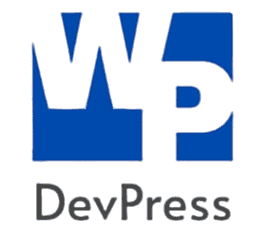Why choosing WordPress to create your website? WordPress is a powerful and flexible platform that can help you to create a professional-looking website without any coding knowledge.
According to Forbes – “WordPress is the most desired and popular content management system (CMS) among users”, and approximately 44% of all websites are built with WordPress.
Whether you’re starting a blog, an online store, or a business website, WordPress has everything you need to get started. In this article, we’ll show you how to build a website with WordPress from scratch in 8 easy steps. Additionally, at the end of this post you’ll find a very helpful checklist to guide you through all the necessary steps covered here.
1. Install WordPress Offline
Before taking your website live to a paid hosting or even if you’re beginning with WordPress development, you can try it out on your local machine to experiment with themes, plugins, and content. This offline environment allows you to familiarize yourself with the platform, refining your design and content creation skills without sign up to a Web Hosting.
Local WordPress environment are ideal for testing and validation tasks. For example, when you’re planning to test and deploy a new feature or plugin to your live site and wanted to certify it won’t break or conflicting with the existing ones.
Local environments are invaluable for WordPress learners. Whether you’re taking a course or developing a website to enhance your portfolio, they prove to be incredibly useful.
You can set up WordPress offline by free using a local server like XAMPP or MAMP. If you prefer a seamlessly offline setup, I’d indicate Local by Flywheel.
You might also like:
2. Register your Domain Name
The second step on how to build a website with wordpress from scratch is to register a domain name. A domain name is the address of your website on the internet, such as google.com or facebook.com. It is what your visitors will type in their browsers to access your website.
To register a domain name, you need to use a domain registrar service, such as Namecheap or GoDaddy. These services allow you to search for available domain names and purchase them for a yearly fee. The cost of a domain name varies depending on the extension, such as .com, .net, .org, etc. Generally, a .com domain name costs around $10-$15 per year.
When choosing a domain name, you should keep in mind the following tips:
- Make it short, simple, and easy to remember
- Avoid numbers, hyphens, and special characters
- Use keywords related to your niche or brand
- Choose a domain extension that suits your purpose and audience
For example, if you want to create a website about gardening, you could choose a domain name like gardentips.com, gardenlovers.net, or gardening101.org.
3. Hosting Provider
The next when building a website with WordPress from scratch is to choose a hosting service. A hosting service is a company that provides the space and resources for your website to be stored and accessed on the internet. Without a hosting service, your website will not be visible to anyone.
There are many hosting services available, but not all of them are suitable for WordPress. You need to choose a web hosting service that offers the following features:
- WordPress installation and updates
- Fast and reliable performance
- Security and backup options
- 24/7 Customer support
There are several web hosting options for WordPress sites, including Bluehost, Kinsta, and Hostinger. Additionally, it’s worth noting that WP Engine is an officially recommended host by WordPress, offering a range of plans and features to suit various needs and budgets. Their platform is designed for high speed and reliability, ensuring optimal website performance. Furthermore, they offer a free 60-day trial, saving you money and hassle.
To choose a hosting service, you need to follow these steps:
- Visit the hosting service website
- Choose a plan that suits your needs and budget. For beginners, we recommend the Basic plan, which costs $15 per month and includes 10 GB of storage, 50 GB bandwidth, and a free SSL certificate
- Enter your domain name
- Fill in your account and payment details and complete the purchase
Once you have paid your hosting service, you will receive an email with the login details and instructions on how to access your hosting account and dashboard.
4. Choosing a Free Theme
The fourth step to building a website with WordPress from scratch is to install a theme. A theme is a collection of templates and styles that define the appearance and layout of your website. WordPress offers thousands of free and premium themes for different purposes and niches, such as blogs, businesses, portfolios, e-commerce, etc.
Some of the best free themes include Astra, OceanWP, and Neve. These themes are lightweight, responsive, and compatible with most plugins and page builders. They also offer a lot of customization options and features to make your website look professional and unique.
To use a free theme, you need to follow these steps:
- Log in to your WordPress dashboard and go to Appearance > Themes
- Click on the “Add New” button and browse the available themes by category, popularity, or features
- Preview the themes that catch your eye and see how they look on different devices and screen sizes
- Choose a theme that suits your needs and preferences and click on the “Install” button
- Activate the theme and customize it according to the theme options and settings
5. Find a Suitable Page Builder
The fifth step on how to build a website with wordpress from scratch is to use a page builder. A page builder is a plugin that allows you to create and edit your pages using a drag and drop interface. You don’t need any coding skills or technical knowledge, just use your mouse and imagination.
Using a page builder gives you more control and flexibility over your website design and functionality. You can create any layout and style you like, add any element and feature you need, and make your website stand out from the crowd.
There are many page builders available for WordPress, but some of the best ones are Elementor, Beaver Builder, and Divi. These page builders are easy to use, fast and reliable, and offer a lot of templates and widgets to help you create stunning pages.
To install and use a page builder, you need to follow these steps:
- Install and activate the page builder plugin of your choice
- Go to Pages > Add New and choose the page builder option
- Start creating your page by dragging and dropping elements from the sidebar to the canvas
- Edit and customize the elements according to your needs and preferences
- Save and publish your page when you are done
- Some page editors offer revisions feature in case you need to revert any change. Check their documentation.
Some of the essential pages that every website should have are:
- Home page: The main page of your website that introduces your brand and value proposition
- About us page: The page that tells your story and mission and builds trust and credibility
- Services or Products page: The page that showcases your offerings and benefits and persuades your visitors to take action
- Contact us page: The page that provides your contact information and a form for your visitors to reach out to you
6. Site Performance
The sixth step to build a website with WordPress from scratch is to improve performance. Performance defines to how fast and smooth your website loads and runs on different devices and browsers. Mantaining a good performance is crucial for your website success, as it affects your user experience, SEO, and conversions.
There are many things that affect your website performance, such as your hosting service, heavy theme, plugins, large images, code, etc. To improve your website performance, you need to optimize these factors and use some tools and techniques to speed up your website.
Some of the best ways to improve your website performance are:
- Adding a caching plugin, such as WP Rocket or W3 Total Cache, to reduce the server load and deliver your website faster
- Adding an image optimization plugin, such as Smush or ShortPixel, to compress and resize your images and improve your loading time
- Using a CDN (Content Delivery Network), such as Cloudflare or Jetpack, to distribute your website content across multiple servers and locations and serve it faster to your visitors
- Running a performance testing tool, such as GTmetrix or Google Page Insights, to measure your website speed and identify the areas that need improvement.
7. Secure Your Website
The seventh step on how to build a website with wordpress from scratch is to keep it secure. Security refers to how safe and protected your website is from hackers, malware, spam, and other threats. Keeping your site secure is vital for your brand/identity reputation, trust, and functionality.
There are many risks and vulnerabilities that can compromise your website security, such as weak passwords, outdated software, malicious plugins, etc. To secure your website, you need to prevent these risks and apply some tools and best practices.
Some of the best ways to secure your website are:
- Use a strong and unique password for your WordPress account and change it regularly
- Use a security plugin, such as Wordfence or Sucuri, to scan your website for malware, block malicious attacks, and monitor your website activity
- Use an SSL certificate, such as Let’s Encrypt.
- Keep your WordPress core, plugins and theme updated
- Customize your login URL path with WPS Hide Login
8. Optimize for SEO
The eighth and final step to build a website with WordPress from scratch is to enhance your SEO (Search Engine Optimization). SEO defines how well your website ranks on search engines, such as Google, Bing, or Yahoo. Having a good SEO is essential for your website visibility, traffic, and conversions.
There are many factors that affect your website SEO, such as your content, keywords, meta tags, links, poor performance, security, etc. To optimize your website for SEO, you need to follow some best practices and use some tools and techniques to improve its ranking.
Some of the best ways to optimize your website for SEO are:
- Adding a SEO plugin, such as Yoast SEO or Rank Math, to analyze your content, keywords, meta tags, and links and suggest improvements
- Using a keyword research tool, such as Google Keyword Planner or SEMrush, to find the best keywords and phrases for your niche and audience and use them in your content and meta tags
- Adding a sitemap plugin, such as Google XML Sitemaps or Yoast SEO, to create and submit a sitemap of your website to search engines and help them crawl and index your pages faster and more accurately
- Applying a link building strategy, such as guest posting, social media, or influencer marketing, to attract high-quality backlinks to your website and improve your authority and credibility
- Running a performance testing tool, such as Google PageSpeed Insights or GTmetrix, to measure your website speed and identify the areas that need improvement
Checklist
Congratulations! You have learned how to build a website with WordPress from scratch in 8 easy steps. You don’t need any coding skills or prior experience, just follow this guide and you will have your own website up and running in no time.
To recap, the 8 steps to building a website with WordPress from scratch are:
- Install WordPress Offline
- Register a Domain
- Choose a Hosting
- Use a Free Theme
- Use a Page Builder
- Improve Performance
- Secure Your Website
- Optimize for SEO
As promissed in the Introduction, to make your WordPress development more friendly and seamlessly, I’m offering this useful helpful checklist where you can keep track of all the steps we’ve covered in this post.
By following these steps, you can create a professional and functional website that meets your needs and goals. Remember to keep your website updated, relevant, and engaging, and you will attract more visitors and customers over time.
We hope you found this article helpful and informative. If you have any questions or feedback, please leave a comment below. We would love to hear from you!











